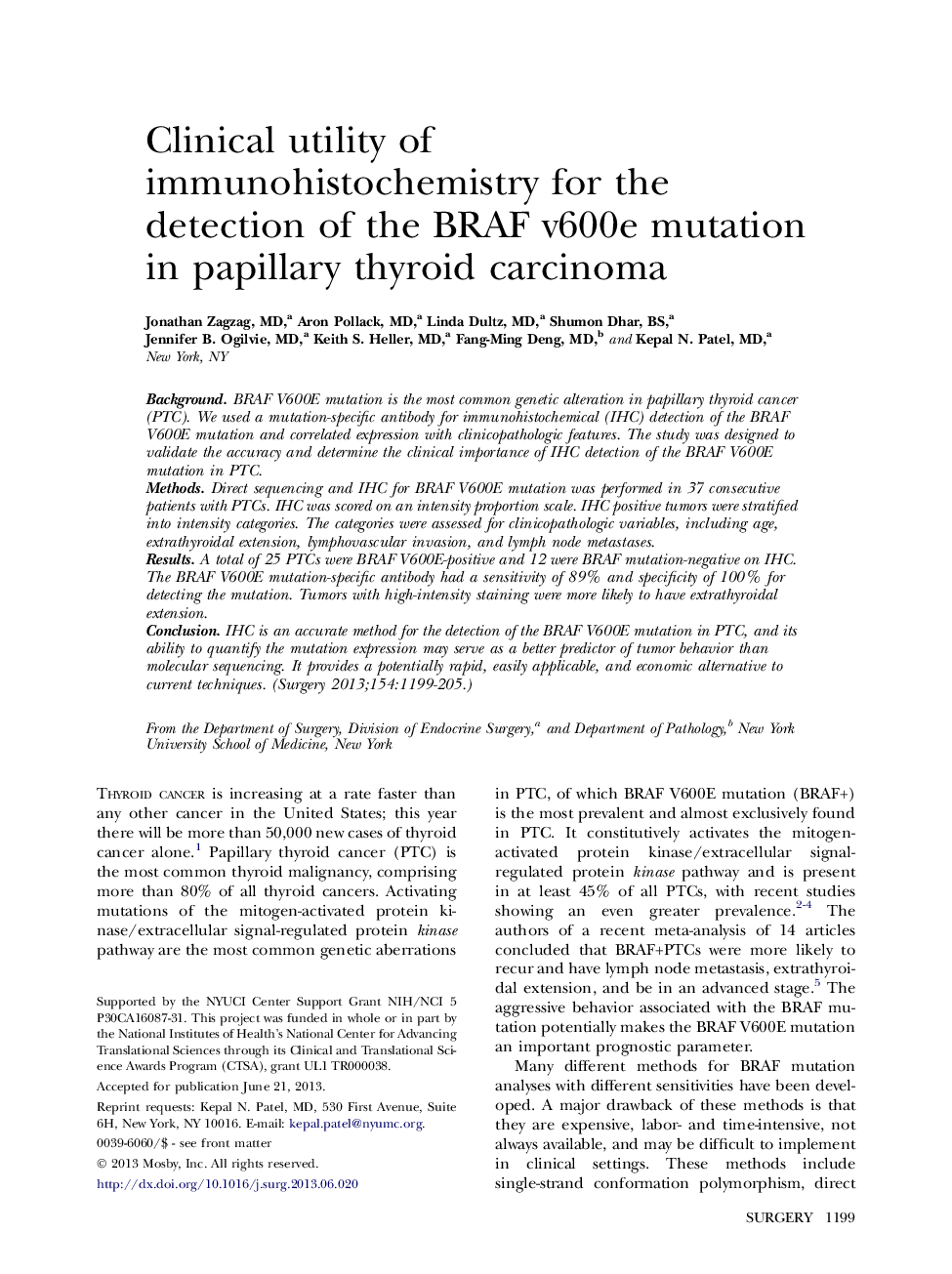| Article ID | Journal | Published Year | Pages | File Type |
|---|---|---|---|---|
| 4307046 | Surgery | 2013 | 7 Pages |
BackgroundBRAF V600E mutation is the most common genetic alteration in papillary thyroid cancer (PTC). We used a mutation-specific antibody for immunohistochemical (IHC) detection of the BRAF V600E mutation and correlated expression with clinicopathologic features. The study was designed to validate the accuracy and determine the clinical importance of IHC detection of the BRAF V600E mutation in PTC.MethodsDirect sequencing and IHC for BRAF V600E mutation was performed in 37 consecutive patients with PTCs. IHC was scored on an intensity proportion scale. IHC positive tumors were stratified into intensity categories. The categories were assessed for clinicopathologic variables, including age, extrathyroidal extension, lymphovascular invasion, and lymph node metastases.ResultsA total of 25 PTCs were BRAF V600E-positive and 12 were BRAF mutation-negative on IHC. The BRAF V600E mutation-specific antibody had a sensitivity of 89% and specificity of 100% for detecting the mutation. Tumors with high-intensity staining were more likely to have extrathyroidal extension.ConclusionIHC is an accurate method for the detection of the BRAF V600E mutation in PTC, and its ability to quantify the mutation expression may serve as a better predictor of tumor behavior than molecular sequencing. It provides a potentially rapid, easily applicable, and economic alternative to current techniques.
